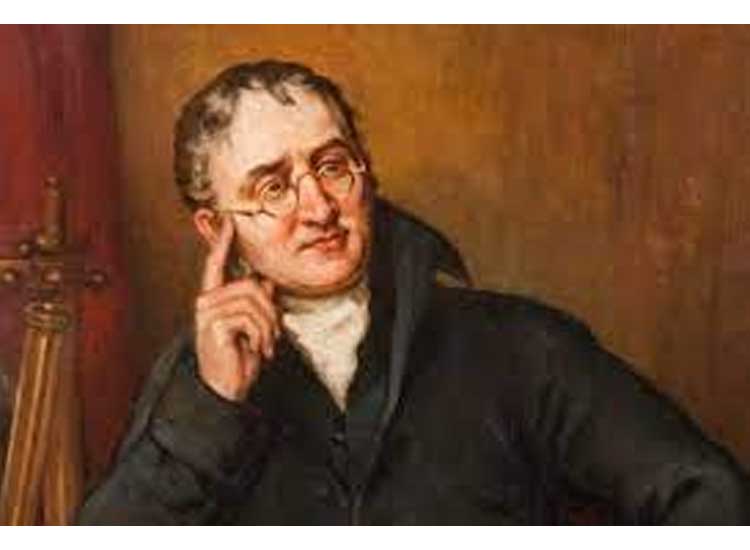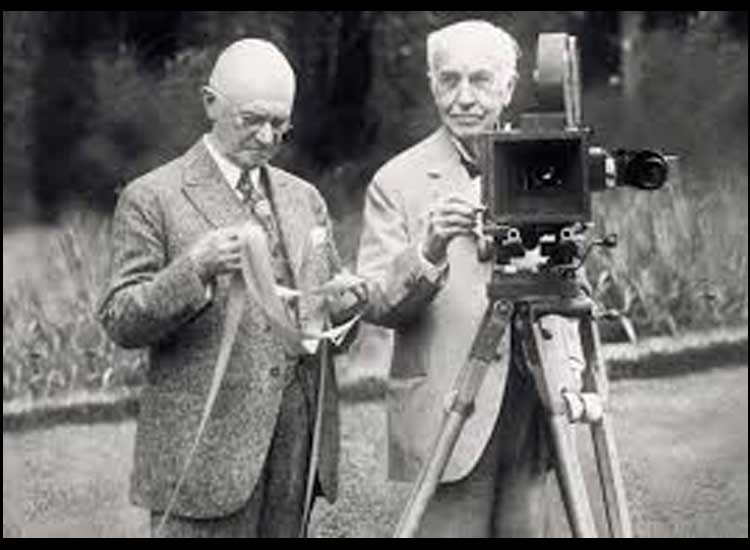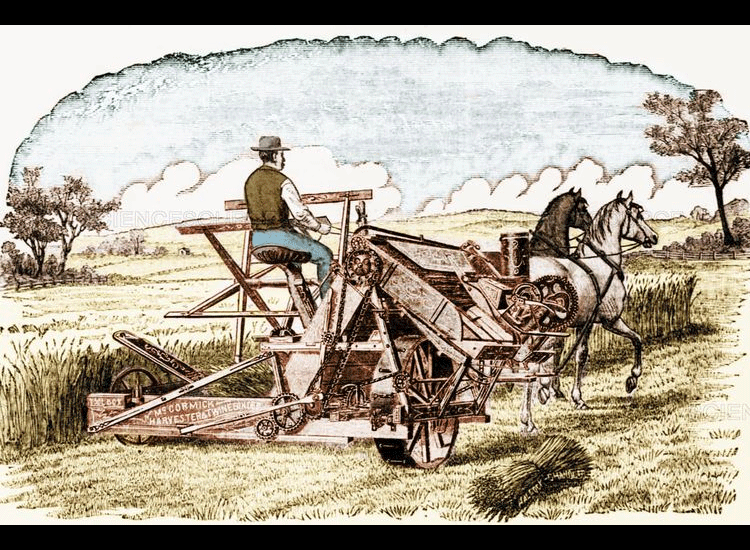The Discoverer of the Atomic Nucleus and the Figures Who Developed It – Discoverer of the Atomic Nucleus – Some people may already know what an atom is, especially those who study chemistry. The discussion about atoms itself has actually been taught since we first entered high school, so we will know about atoms in high school. However, there is nothing wrong if we already know about atoms before entering high school. It would be even better if we could find out about the inventors of the atom, where each inventor always improves the atomic discoveries of the previous inventor.
Why can an atom be said to be a particle that has a very small size? Usually, atoms that are known to many people are shaped like circles with a diameter of 6-30 mm.
Apart from that, atoms always experience development or refinement from previously discovered atoms. Therefore, the inventor of the atom did not consist of just one person, but several figures. Do you know who discovered the atomic nucleus? In this article, we will explain the discoverer of the atomic nucleus and other atomic figures that you need to know. So, what are you waiting for, Grameds, read this article until the end.
Understanding Atoms
The word “atom” is a word that comes from the Greek, namely “atomos” which means “unable to be cut”. In other words, atoms are the smallest particles in an element or material that cannot be cut into pieces. So, an element cannot be formed if it does not contain atoms.
In fact, atoms, which are already the smallest part of an element, apparently still have even smaller particles. The small particles in atoms are protons, neutrons and electrons. Of the three smallest particles, they are usually referred to as subatomic. Protons and neutrons are part of the atomic nucleus and electrons are the smallest particles that surround a neutral charge.
Apart from that, protons are the smallest particles that contain a positive charge, while neutrons are the smallest particles that contain no charge or are neutral. Electrons are the smallest atomic particles that have a negative electric charge. Talking about atoms is very complex, we can know this from the mass in each of the smallest atomic particles. The mass of each subatom is very different, so the mass of each atom is also different.
A proton subatom has a hydrogen mass of about 1.67262 x 10^-27 kg. Then, the neutron subatom has a mass of around 1.67493 x 10^-27 kg and the last is the mass of the electron subatom around 9.1093837015 x 10^-31 kg.
Atoms were first discovered by John Dalton, after which they were refined again by scientists who researched atoms. So, the next discussion is about the inventors and perfecters of atoms that you need to know, keep reading the article until the end, Grameds.
1. John Dalton (Atom Dalton)
John Dalton is someone who is an expert in chemistry, physics, and meteorology. He was born to a father named Joseph Dalton and a mother named Deborah Greenup. John Dalton was born in Eaglesfield, North England on September 6, 1766. John Dalton’s abilities and intelligence could be said to be above average because at the age of 12, he was trusted to help his older brother teach.
John Dalton began to be trusted to teach when he was studying at John Fletcher’s Quaker Grammar School in Eaglesfield, England. Two years after teaching at Eaglesfield, John Dalton moved to Kendall, England. In Kendall, he also taught at a school which only had 60 students.
While teaching, it turned out that John Dalton met Eihu Robinson and John Gough. Eihu Robinson is someone who is an expert in science and John Gough is a mathematician. Of these two people, John Dalton had the basics of mathematics. Apart from that, he also gained knowledge about the use of meteorological instruments. Until finally, John Dalton was able to publish a book about meteorology.
John Dalton, who really liked research and experiments, then he wanted to carry out research on the smallest and indestructible particles known as atoms. He created a theory called “quantitative theory”. In his theory, John Dalton clearly explained atoms, molecules, elements and chemical mixtures. Basically, atomic weights are different, but according to John Dalton there are atoms that are the same, both in quality and quantity, namely two atoms that come from the same group.
John Dalton continued to carry out research and experiments on atoms, until finally around 1804, he had prepared a list of atomic weights. Apart from that, he also explained that every two molecules that come from the same chemical combination consist of the same combination of atoms. This is the “law of definite proportion” which was expressed by a scientist named Joseph Louis Proust. John Dalton explained his theory clearly, so that within 20 years he was accepted among scientists.
In fact, many chemists follow John Dalton’s advice to calculate the relative weight of atoms. Analyze chemical combinations based on their weight, and determine an appropriate combination of atoms that form each group of molecules that have the same characteristics.
Until 1808, John Dalton published a book entitled A New System Chemical Philosophy . He died in Manchester, England on July 27, 1844. He was given a state burial.
2. Sir Joseph John Thomson (Elektron)
The next discoverer and perfecter of the atom was Sir Joseph John Thomson or better known as John Thomson. John Thomson was born on 18 December 1856 in Cheetham Hill and was a physicist. He really likes reading books, so his knowledge and insight are quite broad. Moreover, John Thomson’s father was a bookseller.
In fact, John Thomson spent most of his youth reading books, until at the age of 14, he was accepted at Owens College or currently better known as Victoria University of Manchester. While studying at this school, John Thomson studied applied physics, not just theory, but he was also taught to carry out experiments. After 6 years of education at Owens College, John Thomson continued his education at Trinity College in Cambridge at the age of 20 with a scholarship he received.
Thanks to the physics that John Thomson discovered and developed, namely electrons, he received a Nobel Prize in Physics in 1906. Electrons created by John Thomson are part of atomic or subatomic particles that rotate around the atomic nucleus. The electron discovered by John Thomson has a negative charge. Until in the end, he said that atoms had a shape that resembled raisin bread. According to him, atoms that have a positive charge are surrounded by electrons that have a negative charge. That’s why John Thomson thought that the shape of atoms was almost the same as raisin bread.
John Thomson discovered electrons based on his research on cathode rays in the Cavendish laboratory for 35 years (from 1884 to 1991). From the results of his research and experiments, he realized that cathode rays are particles that make up atoms that have a negative charge. With the discovery of negatively charged electrons, John Dalton’s atomic theory was disproved, especially regarding atoms, the smallest part of the particle.
John Thomson argued that basically the atom as a whole has a neutral charge, so it is neutral. Then, because the electrons surrounding the atom are negatively charged, there must be other particles that have a positive charge. The purpose of this positive charge is to neutralize the negative charge on the electrons. However, the atom created by John Thomson was only able to last for 7 years and then a new inventor of the atom emerged, namely Ernest Rutherford.
Sir Joseph John Thomson died on 30 August 1940 in Cambridge, England. He was buried in Westminster Abbey close to two of the most influential scientists in the world, namely Issac Newton and Charles Darwin.
3. Ernest Rutherford (Inti Atom)
After John Thomson’s atom only lasted for 7 years, then a physicist appeared who was born in New Zealand on August 30, 1871. His name was Ernest Rutherford and was an English national. He was born to a father named James Rutherford and a mother named Martha Thompson. Ernest Rutherford first studied at the Nelson Collegiate School when he was 16 years old.
Then, Ernest Rutherford continued his education at Nelson College, thanks to his intelligence, he received a university scholarship in 1889 and chose to continue his education at the University of Canterbury College. After successfully obtaining BA, MA and BSc degrees, he then carried out electrical technology research for two years. In 1851, Ernest Rutherford received a scholarship in science, then he went to Trinity College, Cambridge. As a student he had the opportunity to carry out research at the Cavendish Laboratory which at that time was led by Joseph John Thomson.
After conducting research at the Cavendish Laboratory as Thomson’s student, Ernest Rutherford managed to see the weaknesses or shortcomings of his teacher, Sir Joseph John Thomson’s, atoms. More precisely, in 1910, he and his two assistants succeeded in finding an atomic nucleus that had a smaller radius compared to the atomic radius.
Ernest Rutherford’s discovery of the atom was based on experiments or trials he carried out with two of his assistants, namely Hans Geiger and Ernest Marsden. The experiment they made is known as alpha (λ) ray scattering on a thin plate of gold. The experiment they carried out actually aimed to prove Thomson’s opinion which said that atoms are like solid, positively charged balls which, when hit by alpha particles, will be reflected.
The research they carried out resulted in the fact that if alpha particles are shot at a thin gold plate, almost all parts of the alpha particles can be transmitted even though there is an angular deviation of less than 1 degree.
After carrying out this experiment, Ernest Rutherford was of the opinion that the atom he had discovered had a positively charged atomic nucleus. In addition, the Rutherford atom’s charge is quite small and is surrounded by negatively charged electrons.
On October 19, 1937, Ernest Rutherford died at the age of 66 in Cambridge, England. He was buried in the nave of Westminster Abbey.
4. Niels Bohr (Atom Bohr)
Niels David Bohr or better known as Niels Bohr is one of the discoverers of the atom. Niels Bohr was born in Copenhagen, Denmark on October 7 1885. He was the second of three children with a father named Christian and a mother named Ellen. Niels Bohr could be said to have been born into a well-off family or tended to be upper middle class.
Niels Bohr’s educational journey could be said to have been quite smooth, until in 1911 he succeeded in obtaining a Doctorate in Physics from the University of Copenhagen, Denmark. He graduated with a dissertation on metal electrons. His abilities in the field of physics earned him the Nobel Prize in Physics in 1922.
It can be said that his interest in atoms began when Niels Bohr went to Cambridge, England and met and studied under the guidance of the inventor of the atom, Sir Joseph John Thomson. After several months of studying with Thomson, Niels Bohr chose to move to Manchester and he studied atoms from Ernest Rutherford. After learning from Rutherford, Niels Bohr began to develop the theory of atomic structure.
When carrying out various kinds of research and having carried out several experiments, Niels Bohr finally published the atom he discovered. According to Niels Bohr, atoms are like planets that revolve around the sun. Apart from that, thanks to his research, he was able to prove that the electrons in atoms can only rotate in orbits and in certain sizes.
Simply put, when the electrons of Niels Bohr’s atom absorb energy, the electrons can move from the inner layer to the outer layer. Meanwhile, when electrons emit energy, the electrons will move from the outer layer to the deeper layer.
5. Werner Heisenberg dan Erwin Schrödinger
The next two people who played a role in the development of the atom were Werner Heisenberg and Erwin Schödinger. In simple terms, it can be said that the discovery of the atom made by Erwin Schödinger used the principles of atomic theory which had been discovered and developed by Werner Heisenberg. Therefore, without Erwin Schödinger, Werner Heisenberg’s atomic theory would be difficult to explain.
Werner Heisenberg was born on December 5, 1901 and died on February 1, 1976. Meanwhile, Erwin Schödinger was born on August 12 and died on 1961. In 1932, Werner Heisenberg received the Nobel Prize in Physics. Meanwhile, Erwin Schödinger won the Nobel Prize in Physics in 1933.
Werner Heisenberg began conducting research on the intensity of the electron spectrum taken as a harmonic oscillator. Then, in June 1925, Werner Heisenberg published a paper entitled Über quantentheoretische Umdeutung kinematischer und mechanischer Beziehungen (Quantum Theoretical Reinterpretation of Kinetic and Mechanical Relations). Then, in November 1925, Heisenberg, Born, and Jordan successfully completed a paper that became known as the foundation of the new quantum mechanics.
Meanwhile, Erwin Schödinger perfected Heisenberg’s theory of quantum mechanics by creating the wave equation theory. With the wave equation theory, quantization will appear scientifically, like in a vibrating string.
Link Terkait :





